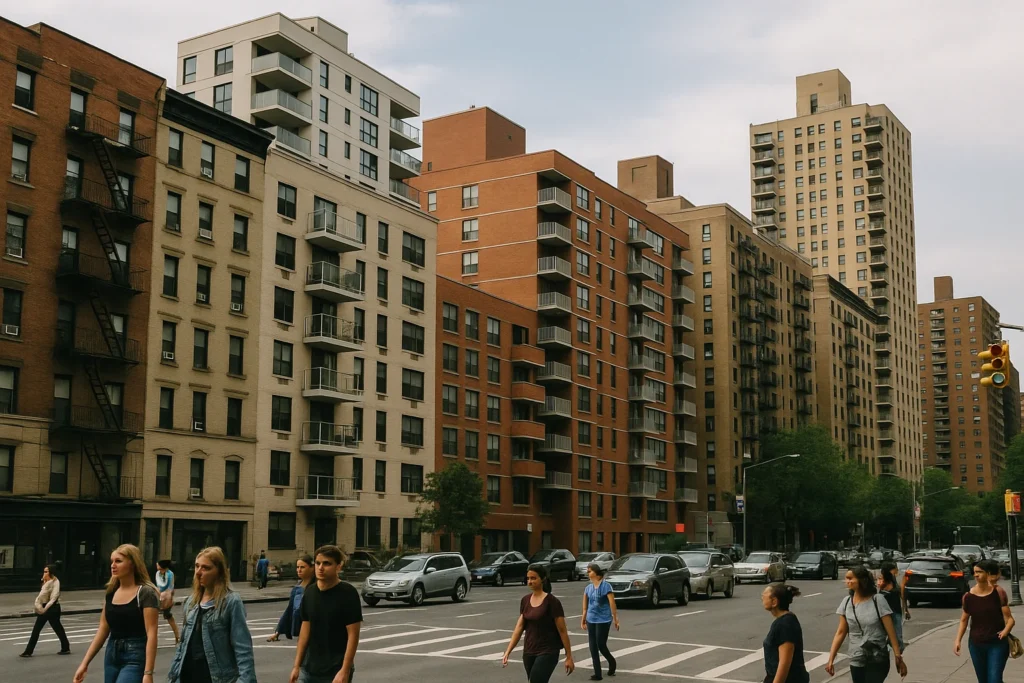Introduction: The Unreachable Dream of a Home
In the bustling cities of 2025, a strange paradox is unfolding. Skyscrapers pierce the clouds, new businesses open their doors, and city life seems more vibrant than ever. Yet, for millions, the most basic need – a place to call home – feels increasingly out of reach. From the sprawling informal settlements of Mumbai to the packed rental markets of Berlin, a global housing crisis has tightened its grip. It’s a complex problem, fueled by a perfect storm of factors: more people flocking to urban centers, wages not keeping pace with costs, the rise of short-term rentals, and the lingering effects of a pandemic that reshaped where and how we live.
This isn’t just about high prices; it’s about a fundamental imbalance that affects lives, families, and the very fabric of our communities. As governments, innovators, and everyday people try to find solutions, the scale of the challenge in 2025 is daunting. Let’s delve into why our cities are struggling to provide a roof over everyone’s head and what this means for the future.
The Perfect Storm: Drivers of the Crisis
The housing crisis isn’t a single issue but a complex web of interconnected problems. Understanding these root causes is crucial to grasping why so many cities are buckling under the pressure.
Urban Migration: The Magnetic Pull of Cities
Cities have always been magnets for opportunity. People move for jobs, education, and a better life. In 2025, this rapid urban migration continues unabated, especially in booming regions of Africa and Asia. According to UN-Habitat, the global urban population is projected to increase by billions in the coming decades. This influx of people puts immense pressure on existing housing, driving up demand faster than new homes can be built. Imagine a small pond suddenly having to hold water from a rushing river – it overflows. That’s what’s happening in many urban centers.
Stagnant Wages vs. Skyrocketing Costs
For many, the struggle is simple math: wages are stagnant, but housing costs are not. A recent 2025 report indicated that a significant majority of workers struggle to afford anything beyond basic living expenses, with rising housing costs cited as their top financial concern. While salaries might creep up slightly, the cost of rent and homeownership has sprinted ahead, creating a widening gap that fewer and fewer people can bridge. This means that even full-time workers can find themselves priced out of the very cities where they contribute to the economy.
Short-Term Rentals: Homes Becoming Hotels
The rise of platforms like Airbnb has transformed spare rooms into lucrative short-term rentals. While great for tourists and property owners, this trend has a dark side for housing affordability. Homes that once served local residents are now effectively tourist accommodations, shrinking the available long-term rental supply. In 2025, cities like Barcelona, Lisbon, and even parts of Spain have taken drastic measures, with Spain’s government ordering Airbnb to block thousands of listings, acknowledging their role in exacerbating housing shortages in tourist hotspots. This conversion of residential units to commercial ones removes much-needed housing from the market.
Post-Pandemic Real Estate Shifts
The COVID-19 pandemic also played a role in reshaping housing markets. While some predicted a mass exodus from cities, the reality was more complex. In many places, demand for residential space actually surged, driven by a desire for more room, often influenced by the shift to remote work. This heightened demand, coupled with supply chain issues that slowed construction, contributed to price increases. While new construction is happening, the affordable housing segment has seen a reduction in its share of total sales, indicating that much of the new supply isn’t meeting the needs of lower- and middle-income residents.
Cities on the Brink: Global Hotspots of Crisis
While the housing crisis is a global phenomenon, some cities are feeling the pinch more acutely than others. These urban centers have become symbols of the affordability challenge.
- Toronto, Canada: A booming tech hub and immigration destination, Toronto has long grappled with soaring home prices and rents. Demand consistently outstrips supply, pushing many out of the city core.
- Berlin, Germany: Once known for its relatively affordable living, Berlin has experienced a rapid escalation in rents over the past decade, driven by its growing status as a cultural and tech magnet. Activists and residents have been vocal in their demands for more government intervention.
- Mumbai, India: As a major economic powerhouse in India, Mumbai faces immense pressure from rural-urban migration. The city struggles to build enough formal housing, leading to the rapid expansion of informal settlements and slums where millions reside.
- San Francisco, USA: With its high-paying tech industry, San Francisco’s housing market has been notoriously expensive for years. Limited land, strict zoning laws, and high demand mean that only the highest earners can comfortably afford to live within city limits.
- Sydney, Australia: Similar to Toronto and San Francisco, Sydney’s strong economy and desirable lifestyle have attracted both local and international residents, leading to fierce competition for housing and some of the highest property prices globally.
These cities highlight that the crisis isn’t confined to any single economic system or region; it’s a worldwide struggle to house growing urban populations.
The Remote Work Effect: Digital Nomads and Rent Hikes
The shift to remote work has been a game-changer for many, offering flexibility and freedom. However, it’s also had an unexpected and significant impact on housing affordability, especially in smaller or traditionally cheaper cities that have become popular with digital nomads.
From Cityscapes to Seaviews
Imagine a tech worker earning a Silicon Valley salary but choosing to live in a charming coastal town in Portugal, or a quaint European village. This “arbitrage” of wages versus local living costs means they can afford to pay significantly more for rent than local residents. This increased demand, combined with higher purchasing power, drives up rental prices in these smaller, desirable locations, often to the detriment of the long-term residents.
Even within large countries, this trend is visible. Digital nomads seeking “affordable, culturally rich” areas have contributed to gentrification in cities like Delhi, inadvertently inflating housing costs and property values, and shifting the socioeconomic character of neighborhoods. While they bring economic benefits, the pressure on local housing markets can be severe, leading to displacement and changing the face of communities.
Governments Respond: From Rent Caps to Building Booms
Governments worldwide are grappling with the housing crisis, implementing a range of policies from strict regulations to ambitious development plans. Their approaches vary, but the urgency is universal.
A Patchwork of Solutions
- Rent Control Laws: Many cities are enacting or strengthening rent control laws to curb rapid price increases. In India, for example, a new 2025 Rent Control Law aims to protect tenants from exploitation by setting limits on annual rent hikes. The goal is to provide stability for renters, preventing sudden financial burdens that could lead to eviction.
- “Build-to-Rent” Developments: Some governments and developers are promoting “build-to-rent” projects, where entire developments are designed and constructed specifically for rental purposes, often with a focus on long-term affordability. This aims to increase the supply of rental housing, rather than focusing solely on homes for sale.
- Bans and Regulations on Short-Term Rentals: Following the lead of cities like Amsterdam and New York, more governments are imposing stricter regulations, permits, and even outright bans on Airbnb and similar short-term rental platforms in residential zones. Spain’s recent actions against Airbnb listings illustrate a growing determination to claw back residential properties for local use.
- Public and Affordable Housing Initiatives: Many municipalities are investing directly in public housing projects or offering subsidies and incentives for developers to build more affordable units. This often involves partnerships between public and private sectors to deliver housing for low- and middle-income families.
These government actions reflect a growing understanding that market forces alone cannot solve the crisis and that proactive intervention is needed to ensure housing remains a human right, not just a commodity.
The Human Cost: Homelessness and Evictions on the Rise
Beyond statistics and policy debates, the housing crisis has a deeply human cost. In 2025, despite signs of economic recovery, homelessness and evictions are rising in many major cities, pushing vulnerable populations to the brink.
Lives Displaced, Dreams Shattered
In the U.S., homelessness reached its highest levels since data collection began in 2024, a trend largely attributed to sky-high housing costs and an insufficient social safety net. Imagine a family who works hard, pays their bills, but simply cannot find an affordable place to live, leading to the terrifying prospect of sleeping on the streets.
Eviction rates are also soaring. In Washington state, for instance, eviction filings in January 2025 were a staggering 66% higher than pre-pandemic levels. This spike is a direct consequence of rising rents, stagnant wages, and the expiration of pandemic-era protections like rental assistance. These numbers represent real people losing their homes, their stability, and often, their hope. The crisis disproportionately affects marginalized communities, deepening existing inequalities and creating a cycle of poverty that is incredibly difficult to break.
Innovative Solutions: Building Smarter, Not Just More
While the challenges are immense, innovation offers rays of hope. Architects, urban planners, and construction companies are exploring new ways to build faster, more sustainably, and more affordably.
From Concrete to Community
- Green Housing Innovations: Sustainable building practices are becoming central to solving the crisis. This includes using recycled materials, designing for energy efficiency with smart home technology and solar panels, and creating homes that reduce utility bills in the long run. The focus is on building communities that are resilient to climate change and financially sustainable for residents.
- Modular Housing:Modular housing innovations are gaining significant traction in 2025. These homes are built in sections in a factory and then quickly assembled on-site. This method offers several advantages:
- Speed: Construction time is drastically cut, sometimes allowing a home to be assembled in just a few days.
- Affordability: Factory production reduces labor costs and material waste, making modular homes a more cost-effective option.
- Sustainability: Controlled factory environments lead to less waste and more precise use of materials.
- Flexibility: Modular units can be customized and scaled to fit various needs, from single-family homes to multi-story apartment buildings.
- Community-Centered Designs: Beyond the physical structure, there’s a growing emphasis on designing affordable housing developments that foster a sense of community. This includes shared green spaces, communal kitchens, and recreational areas that encourage social interaction and well-being.
These innovations aren’t just about constructing buildings; they’re about creating vibrant, livable communities that prioritize both affordability and sustainability.
Societal Consequences: New Ways of Living
The housing crisis is forcing people to adapt, leading to significant societal changes in how and where we live. These shifts are redefining what a “home” looks like for many in 2025.
Redefining Home and Community
- Migration to Suburbs: One prominent trend is the continued migration to suburbs. Families, particularly, are trading city living for more affordable housing, larger spaces (often with backyards), and better schools in suburban areas. Remote work flexibility has made this move more feasible, as long commutes are no longer a daily burden for many. Suburbs are evolving, too, with improved infrastructure and amenities.
- Co-Living Trends: For young professionals and urban migrants, co-living trends are gaining popularity as a viable solution to high rents. These spaces offer private bedrooms but shared amenities like kitchens, lounges, and workspaces. They emphasize affordability, convenience, and community, appealing to those who value social interaction and flexible living arrangements over traditional independent apartments.
- Multi-Family Households on the Rise: While not always a choice, the economic pressure of the housing crisis is leading to an increase in multi-family households. This means adult children staying longer with parents, multiple generations living under one roof, or unrelated adults sharing living spaces to split soaring costs. It’s a return to older models of living, driven by necessity.
- Longer Rental Durations: Faced with a challenging homeownership market, many individuals and families are opting for longer-term rental agreements, accepting that renting may be their long-term housing solution.
These adaptations highlight the resilience and resourcefulness of people in navigating the crisis, but also underscore the immense pressure on housing systems that are struggling to meet fundamental needs.
Conclusion: A Call for Collective Action
The global housing crisis of 2025 is a stark reminder that our cities are struggling to keep up with demand. It’s a complex interplay of rapid urban migration, stagnant wages, the proliferation of short-term rentals, and the lasting impacts of post-pandemic real estate shifts. From the evident struggles in megacities like Mumbai to the rising homelessness in Western urban centers, the human cost is undeniable.
Yet, this crisis is also catalyzing innovation and driving crucial conversations. Governments are experimenting with diverse responses, from new rent control laws to cracking down on short-term rentals. Innovators are developing green and modular housing solutions that promise faster, more affordable, and sustainable construction. And society itself is adapting, with shifts towards suburban living, the growth of co-living spaces, and the resurgence of multi-family households.
Ultimately, solving this crisis requires a collective effort. It demands smarter urban planning, equitable economic policies, significant investment in affordable housing, and a commitment to ensuring that a safe, dignified home is a fundamental right, not a luxury, for every global citizen. The challenges are significant, but the urgency of the moment calls for bold and collaborative solutions.



